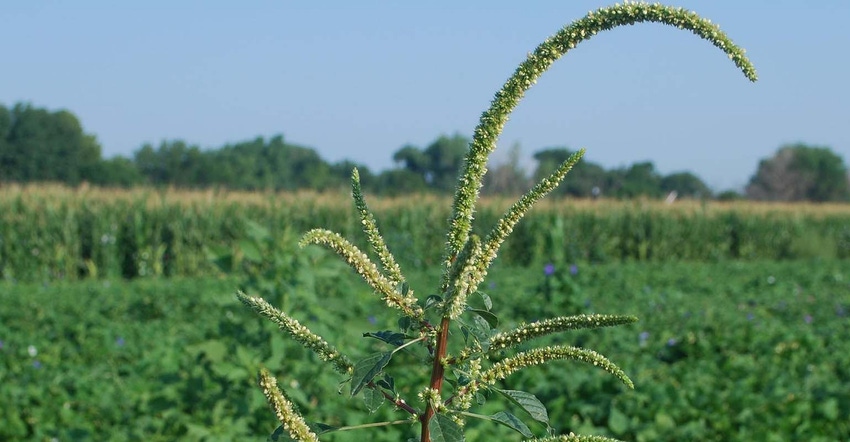September 14, 2017

Palmer amaranth – a weed ranked by experts as the most troublesome in the U.S. – has been detected in some native seed mixes planted to foster pollinator habitat.
Palmer amaranth has become commonplace in agricultural fields across the South and the Southeast and has been traveling north for several decades. It is found on both U.S. coasts, in the Midwest, as far north as Canada and as far south as the Mississippi Delta. Its small seeds are easily spread by birds and farm equipment, and in bird seed, livestock feed and manure.
Recent infestations, though, show the weed is also being spread in some native seed mixes – even those labeled as zero percent weed seed. That’s the case in Iowa, Minnesota and other Midwest states, where there has been a concerted effort by farmers and other landowners to plant native wildflowers that can serve as a pollinator habitat.
In addition to grow-out tests, seed producers now have two new rapid DNA tests to help them identify Palmer amaranth and ensure the purity of the native seed mixes they sell. The California Department of Food and Agriculture and Eurofins BioDiagnostics have developed an independently validated DNA sequencing test promoted by the American Seed Trade Association. Recently weed scientists with the University of Illinois have developed a more sensitive DNA test that can detect a single Palmer amaranth seed in a 100-seed sample. It can also be used on leaf tissue to identify emerged plants.
“If left unmanaged, Palmer amaranth can easily outcompete desirable plants that encourage pollinators,” says Lee Van Wychen, Ph.D., science policy director for the Weed Science Society of America. “If you purchase seed mixes containing pigweed or other Amaranthus species, be sure they have been tested to verify they are free of Palmer amaranth.”
Weed scientists say that if you’ve already planted untested seed, it’s important to be proactive. Make certain you know how to identify Palmer amaranth and what to do to eliminate it. “A single mature plant left to go to seed can turn into a weed management nightmare for years to come,” Van Wychen says.
Identifying Palmer amaranth
Palmer amaranth plants are either male or female, which promotes genetic diversity and gives them the ability to adapt quickly. A single female plant can produce as many as a million seeds, helping Palmer amaranth outcompete other plants and crops.
At early stages of growth, it can be hard to distinguish Palmer amaranth from waterhemp and other Amaranthus species. Scientists advise that you take a close look at multiple plants since characteristics can vary, even within a field.
Local agricultural extension agents may be able to help if you are uncertain about the presence of Palmer amaranth. You also can take advantage of online resources. A few examples: Experts with Penn State Extension Services have produced an eight-point identification guide. Similar guides are available from Iowa State University and Kansas State University. A video-based guide is available from Purdue Extension Services.
Managing Palmer Amaranth in a Pollinator Plot or Conservation Field
It is important to remove Palmer amaranth early in its growth cycle. If left unchecked, the weed can grow aggressively, spread quickly and have a devastating impact on pollinator plots, conservation areas and crop yields.
Experts recommend a number of integrated control strategies. Palmer amaranth plants can be controlled by hand weeding, mechanical removal, spot burning and spot herbicide treatments. Care must be taken since broken-off stems as small as one inch can sprout, flower and produce seed.
If early intervention is ineffective, broadcast herbicide treatments may be necessary, followed by overseeding to provide further competition. Make certain, though, that you coordinate with your local Natural Resources Conservation Services and Farm Service Agency offices to ensure that you are complying with conservation program requirements.
“The bottom line is that you cannot let Palmer amaranth go to seed,” Van Wychen says. “The extra 10 minutes it takes to hand-pull Palmer amaranth plants will be worth every second of your time.”
Additional information and control tips can be found in the following two fact sheets:
National Pest Alert: Palmer Amaranth, produced and distributed in cooperation with the USDA NIFA Regional Integrated Pest Management Program Centers and state-based Extension programs.
Herbicide options for Palmer amaranth in CRP, produced by Iowa State University (with some recommendations specific to Iowa).
Source: Weed Science Society of America
You May Also Like




